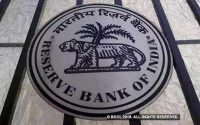$100 Website Offer
Get your personal website + domain for just $100.
Limited Time Offer!
Claim Your Website NowWayanad protest: A Supreme Court order, decade-old ban and no rail connectivity
Source: indiatoday.in
ayanad came to the national reckoning early this year when Congress leader Rahul Gandhi chose it as his second constituency to contest parliamentary election. Prior to that Wayanad was a local tourist destination for people in neighbouring areas of Karnataka and Tamil Nadu. Within months, Wayanad is again in news over opposition to the night traffic ban through Bandipur tiger reserve, a part of which falls in the district.
Rahul Gandhi, the Wayanad MP, has lent his support to the protesters, who have upped their ante since September 25 with a relay hunger strike. They are demanding the withdrawal of ban on vehicular movement on the National Highway 766 passing through the Bandipur tiger reserve which connects Wayanad with Chamarajanagar district of Karnataka.
Bandipur tiger reserve
Home to about 140 tigers, more than 1,500 elephants and over 25,000 deer, Bandipur is one of the oldest tiger reserves in India. It was once a forest where the Maharaja of Mysore would go for hunting. When Project Tiger was launched in 1973, Bandipur forest was declared as a tiger reserve. In 1984, Bandipur tiger reserve became a national park.
It is spread over about 1,000 sq km across three states – Karnataka, Tamil Nadu and Kerala. In fact, it connects three reserved forests of the Nagarhole National Park of Karnataka, the Mudumalai Wildlife Sanctuary in Tamil Nadu, the Wayanad Wildlife Sanctuary of Kerala, where protesters are sitting on an indefinite hunger strike.
What is the issue?
This is a 19-km stretch running through protected Bandipur forest on which vehicular movement is not allowed between 9 pm and 6 am. The ban was first imposed in 2009 following a report by an expert committee concluding that night traffic posed serious threat to life and the biological behavrioural pattern of the wildlife in the protected forest.
The night traffic ban has brought down the number of accidents and injuries to the wild animals. But it has come at a cost to the people of Wayanad, which depend a lot on the markets for its agricultural and livestock products in neighbouring Karnataka districts.
Wayanad does not have rail connectivity. Residents have to catch a train from the nearest railway station in Karnataka. A ban on night traffic increases their waiting time at railway stations causing inconvenience and affecting the economy.
How are governments and courts involved?
Three routes connect Wayanad with neighbouring areas of Karnataka. One of them – between Mysuru and Wayanad – had been closed for night traffic, from 6 pm to 6 am, on the recommendation of an empowered committee appointed by the Supreme Court in the view of accidents causing death and injury to wildlife in Bandipur tiger reserve.
The ban on National Highway 766 followed a year later. It was imposed by the Chamarajanagar district administration of Karnataka. The residents of Wayanad complained and the Kerala government sent a request to the Chamarajanagar district administration, which lifted the night traffic ban.
Activists then moved the Karnataka High Court seeking re-imposition of night traffic ban. The high court upheld the night traffic ban in 2010 and directed the Karnataka government to develop an alternate route.
The Kerala government approached the Supreme Court for relief. Activists too followed. After much delay, the Supreme Court upheld the night traffic ban.
In August this year, the Supreme Court asked the Centre and state governments to consider the possibility of closing the route permanently. The possibility of permanent closure of the National Highway 766 has led to current protests through the hunger strike.
The Supreme Court, like the high court, also directed the governments to develop alternate road connectivity.
Alternatives
One of the alternate routes discussed between the governments and the committees was to construct an elevated road overlapping the national highway. In a recent exchange of letters between Kerala Chief Minister Pinarayi Vijayan and Union minister Prakash Javadekar, the Centre pointed out that elevated road construction was ruled out in meetings that involved secretary level officers of the central and state governments.
So, the only alternative currently available to people is the one that connects Wayanad with Mysuru running through Mysuru Kutta, Gonikuppal and Hunsur in Karanataka. The problem is that this route is 35 km longer than the national highway, and it also passes through the same forest.



